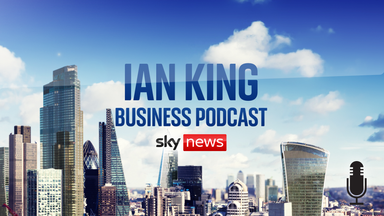Interest rates are expected to fall this year as inflation drops back towards the Bank of England’s 2pc target.
Borrowing costs have hit 16-year highs as policymakers try to stop prices rising at an uncontrollable pace.
However, elevated interest rates have caused pain for mortgage holders and limited the spending power of consumers, impacting businesses.
Read on for your guide to everything you need to know about inflation, interest rates and how changes in borrowing costs affect you.
What is inflation?
Inflation is the term used by economists and governments to describe the speed at which prices are rising.
In Britain, we usually measure inflation by comparing the price of a particular item to its price at the same time the previous year.
For example, if a chocolate bar costs £1 in April 2023 and then in April 2024 it costs £1.04, its price has risen by 4pc and thus inflation for this particular item stands at 4pc.
However, statisticians have to calculate the pace of price rises across the whole of the economy and use a variety of methods to estimate this as accurately as possible.
The most closely followed of these methods used by the Government and the Bank of England is the Consumer Prices Index, often abbreviated to CPI, which is published each month by the Office for National Statistics (ONS).
This calculates inflation based on a typical basket of goods and services which statisticians at the ONS update every year.
The latest update to the basket caused headlines after vinyl was reintroduced for the first time since 1992. However, there are other methods used by some economists, the most notable of which is the retail prices index, known as RPI.
What is RPI?
RPI is no longer considered a national statistic. The ONS said it can be guilty of “at times greatly overestimating and at other times underestimating changes in prices and how these changes are experienced”.
Statisticians say it is not a good measure of inflation for several reasons, including that it is “heavily influenced by house prices and interest rates”.
However, RPI remains significant as it is used to calculate increases in the price of various items, including train tickets. It is also used to calculate the yield and the amount repaid on redemption of a sizeable portion of government-issued bonds, known as gilts. That is why government debt repayments increase significantly when the rate of inflation rises.
What are interest rates?
Interest rates govern the amount you are charged for borrowing money. They are expressed as a percentage of the total amount of the loan. The lower the interest rate, the more favourable the terms of the loan are. The higher the interest rate, the more you have to pay back.
When politicians, commentators and economists talk about interest rates, they are usually referring to the Bank Rate set by the Bank of England.
The Bank Rate is used to calculate interest rates across the wider economy, from savings to mortgages.
The Bank Rate has been at 5.25pc since August, which is its highest level since 2008. It is set every six weeks at a meeting of the Monetary Policy Committee, a group of nine experts at the Bank of England, including the Governor, Andrew Bailey.
Why are interest rates so high?
The Bank of England has increased interest rates to 5.25pc in an effort to bring down inflation to its 2pc target.
Inflation stood at 3.2pc in March but rose as high as 11.1pc in October 2022.
The Bank of England is independent from the Government and cannot implement fiscal policies designed to reduce inflation.
Its key tool that it can use to bring down inflation is the Bank Rate. By increasing the cost of borrowing, it makes it more expensive to take on debt, which limits spending.
Lower spending, in theory, forces businesses to lower their prices to attract customers, limiting inflation.
Why is the current inflation rate so high?
Britain has faced a series of shocks to the economy which have caused prices to increase rapidly.
The Covid pandemic shattered supply chains and disrupted trade. This meant there were fewer products available to buy on shelves.
The pandemic also sent more money chasing fewer products as Britons were protected from loss of earnings by the furlough scheme.
Shortly afterwards, the war in Ukraine increased the price of crucial commodities, including energy, food and metals, as Vladimir Putin’s invasion disrupted supplies.
At the same time as these shocks, prices have also been pushed higher by Britain’s low unemployment rate.
As companies struggled to find the workers needed, they have been forced to offer pay rises to retain staff and attract new recruits.
However, this can fuel inflation by giving people more money to spend even as prices rise.
Why does the Bank of England have a 2pc target for inflation?
The Bank of England aims to set monetary policy at a level which keeps inflation close to 2pc, which policymakers believe is “good for the UK’s economy”.
The 2pc target, which is set by the Government, could in theory be changed – but Bailey has made it clear he thinks this is a bad idea.
The Bank of England states on its website: “If inflation is too high or it moves around a lot, it’s hard for businesses to set the right prices and for people to plan their spending.
“But if inflation is too low, or negative, then some people may put off spending because they expect prices to fall.
“Although lower prices sounds like a good thing, if everybody reduced their spending then companies could fail and people might lose their jobs.”
If the Bank of England misses the inflation target by more than one percentage point either side, the governor must write a letter to the chancellor explaining why this has happened and set out what will be done to bring it back to 2pc.
When will interest rates fall?
Mr Bailey declared he was “optimistic” that the era of higher inflation was at an end, after the latest meeting of the Monetary Policy Committee, in which interest rates were held at 5.25pc for a sixth time in a row.
Monetary policymakers usually talk with an element of ambiguity to give themselves leeway to change their course of action if there is a significant change in the outlook for the economy.
Mr Bailey stressed rate cuts at the next meeting of the Monetary Policy Committee were “neither ruled out nor a fait accompli”.
The best guess we often have about when rates will be cut comes from taking a look at the actions of derivatives traders.
These people make a career out of trying to guess when central banks will cut interest rates – and their actions on money markets offer a glimpse into when cuts could come.
At present, the Bank of England is expected to make its first interest rate cut by August at the latest, with derivatives trades indicating that there is more than a 50pc chance of a first cut happening in June.
How do interest rates affect my mortgage?
The Bank Rate is used to calculate the interest on numerous forms of lending, the biggest of which for most people is their mortgage.
Mortgage lenders set their own borrowing rates based on so-called swap rates. These are agreements between two parties to exchange one stream of interest payments for another over a set period of time.
They track expectations for when and by how much the Bank Rate will change in the future, based on how traders have assessed the latest economic data.
These swap rates fell after a sharp drop in CPI inflation from 4.6pc in October to 3.9pc in November. As a result, at the turn of the year money markets had priced in at least five interest rate cuts by the Bank of England before the end of 2024, which triggered a mortgage rates pricing war between lenders in an effort to attract more customers.
However, that all changed as inflation later proved more stubborn than hoped, with figures published in January and February showing inflation ticked up from 3.9pc in November to 4pc in December and then held at 4pc in January.
As a result, mortgage rates moved higher as swap rates shifted. Money markets are now pricing in that interest rates will be cut by August at the latest. We have a handy guide on everything you need to know about remortgaging in 2024 here.
How do high interest rates affect savings rates?
Higher interest rates also mean that banks and building societies are able to offer higher returns to savers depositing their cash with them. However, in practice savings rates rise much more slowly than the Bank Rate.
Hundreds of savings accounts currently offer a rate that beats CPI inflation, which fell to 3.2pc in March, down from 3.4pc in February, according to the latest figures from the Office for National Statistics.
You can read a guide to this week’s best savings rates here.
Disclaimer: The copyright of this article belongs to the original author. Reposting this article is solely for the purpose of information dissemination and does not constitute any investment advice. If there is any infringement, please contact us immediately. We will make corrections or deletions as necessary. Thank you.



